I started growing my own mint last year. This year I’ve included the varieties chocolate, ginger, orange and spearmint. Mint is one of the most aromatic herbs known for its culinary and therapeutic benefits. In ancient times mint was revered as valuable as used as money. Today the benefits of Mint Tea are astounding. This one herb soothes the soul and calms the mind with a whiff of its fragrance. Think what one cup will do!
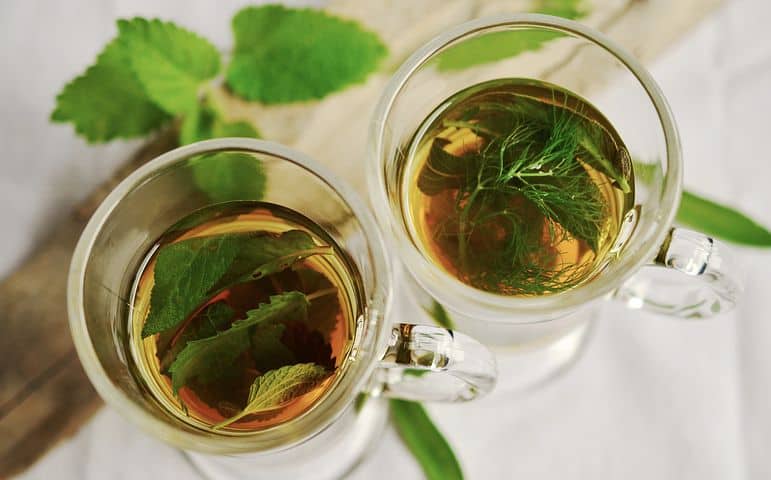
What is mint
Mint is native to Europe and also known as Mentha. The mint plant produces an oil which is the third most popular oil in the world. Mint is an ancient herb that is noted for culinary, medicinal and aromatic benefits. From Europe to the Middle East mint has been used as an incense to clear the air in homes and religious areas. Native Americans have been using mint for centuries. Mint has a lot of history from using it by cleaning out homes and rubbing on dining tables to welcome guests.
Mint is also mentioned in the bible as one of the herbs used to pay taxes. That makes mint a very worthy herb. So worthy was mint to the Japanese it was carried in silver boxes attached to their belts.
Mint is a sweet smelling and sweet tasting flavored herb. Mint has a cooling sensation. Mint is renowned by many culinary experts as well as tea drinkers and herbal enthusiasts.
Mint is an herb and one thing I recently learned is a way to distinguish mint from another plant is this. Mint has a square stem. I never knew that. I had an herb that was growing from last year and it smelled like mint but a little different. In researching I found that mint has the characteristic of the square stem. I checked and the stem is square. Later I found that the plant was indeed mint, but of the anise flavor.
I also have many varieties of mint in my garden. I have garlic mint, Chocolate mint, Ginger mint and licorice flavored mint. I love the varieties and creating teas with each one. The benefits of mint tea, no matter what variety is bountiful.
Besides tea, mint can be added to your salads, soups, plain water. Kombuchas (some of the best kombucha I have made so far).
Besides mint there are other perennial plants that belong to the same group and they are:
Peppermint – This is the classic mint fragrance
Spearmint – Popular in backyards all over North America
Catnip – My cat loves our home grown catnip (not for culinary usage)
Bergamot – ahhh yes my Earl Grey lovers, here you go
Lemon Balm – slight lemon flavor and a great garnish
Besides the square stem, mint leaves are jagged. There are also small flowers that pop out of the top of the plants that are either white, purple or pink in color.
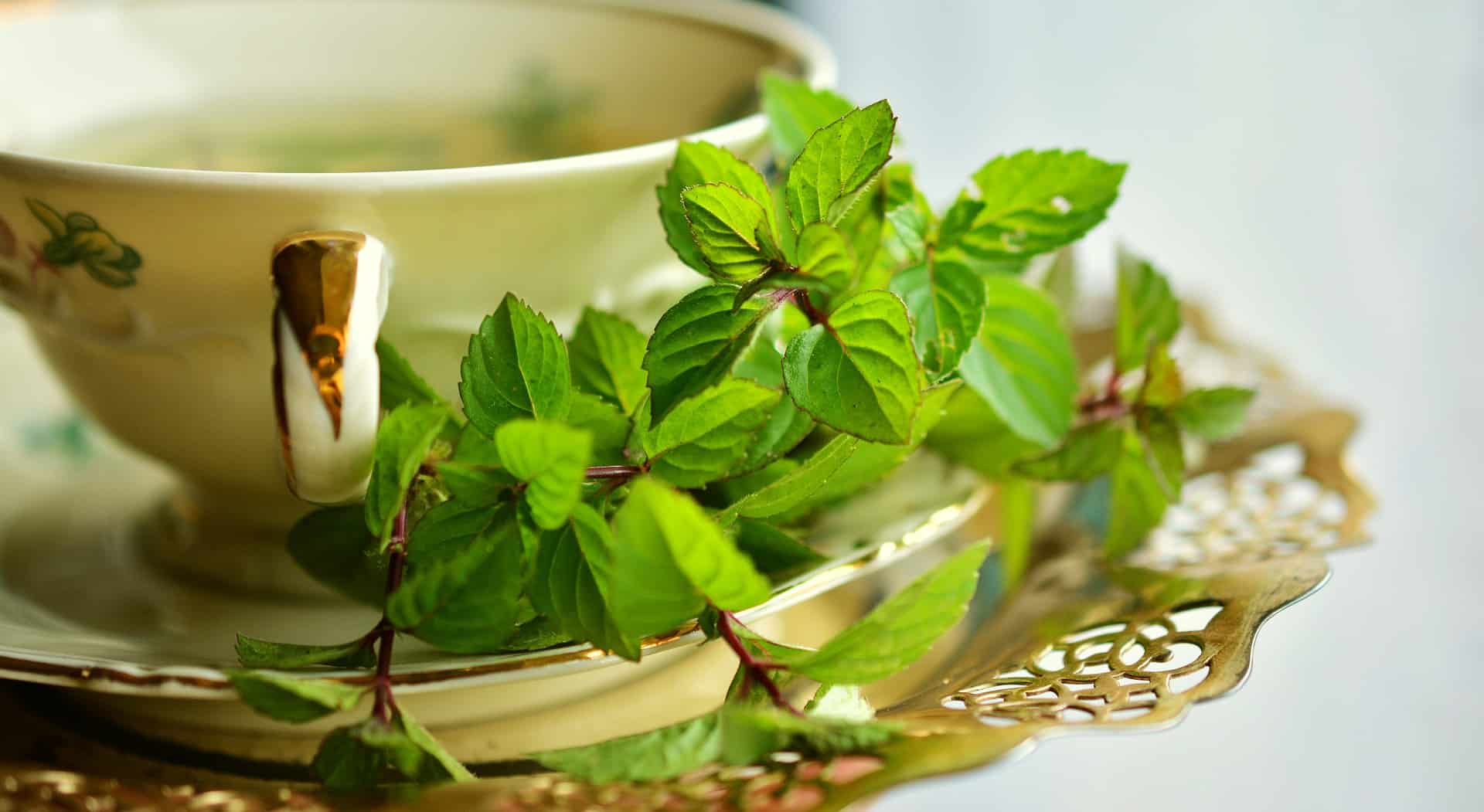
Mint Nutritional Facts
Mint is very high in antioxidants and that is a potential big health benefit for us. It’s one of the highest antioxidant capacities of any food. WOW!
Two tablespoons of fresh peppermint provides
- 2 calories
- 0.12 grams of protein
- 0.48 grams carbohydrates
- 0.03 grams of fat
- 0.30 grams of fiber
Mint contains small amounts of
- Potassium
- Magnesium
- Calcium
- Phosphorus
- Vitamin C
- Iron
- Vitamin A3
Benefits of mint tea
While mint is highly regarded for its culinary uses. The scent mint is also widely known for the following health benefits
- Antioxidant – helps to boost your immunity
- Helps to calm allergy symptoms – Contains rosmarinic acid is anti inflammatory
- Helps calm the digestive system – Mint slows down the process to give relief
- Relieves nausea – helps to reduce inflammation
- Calms mental stress – Mint’s antispasmodic nature of menthol is calming and relaxing
- Calms a headache – by promoting relaxation and opening constricted blood vessels
- Clears up congestion – relieves the irritating sensations
- Reduces fever – menthol in mint cools the body
- Helps relieve pain – applying topically can increase the pai threshold
- Helps relieve fatigue – no caffeine and relaxing scent calms the body, mind and soul
- Insomnia – Mint tea is caffeine free and calming, it helps you sleep
- Freshens the breath – chew on a couple of leaves and your breath will smell very fresh
- May help relieve insect bite irritation
- Calm Rashes – Mint also contains salicylic acid to calm irritating skin issues
- Soothe Sunburn – Cool a cup of mint tea and use it as a soothing sunburn relief
A few recipes to use with your mint
Foot scrub
Ohhh I love this scrub, I also use it on my hands as well
- ¾ cups coarse sea salt
- ¾ Tablespoon olive oil
- ¾ Tablespoon torn mint leaves
- 5 drops tea tree oil
Mix all ingredients together, store in a glass airtight container
Keeps for about 2 weeks
Room Freshener
I love this recipe and have adapted it many different ways, use your own imagination and create away!
- One small mason jar
- Add some sliced oranges (try a lime or lemon also)
- Add some Fresh mint (leaves or sprigs)
- Add some fresh thyme
- Add a teaspoon of vanilla
- Fill with water
That’s it. Easy and done and your room will be smelling so fresh.
Floor Cleaner
Look how easy this is
- Spray Bottle
- Add a handful of fresh mint leaves
- White vinegar
Replace spray top and use of floors or countertops
All purpose cleaner
Another recipe so easy
- 1 part water
- 1 part vinegar
- Rub a handful of mint leaves together to release scent
- Add to bottle
You can also add lemon, lime, orange, or other herbs as well.
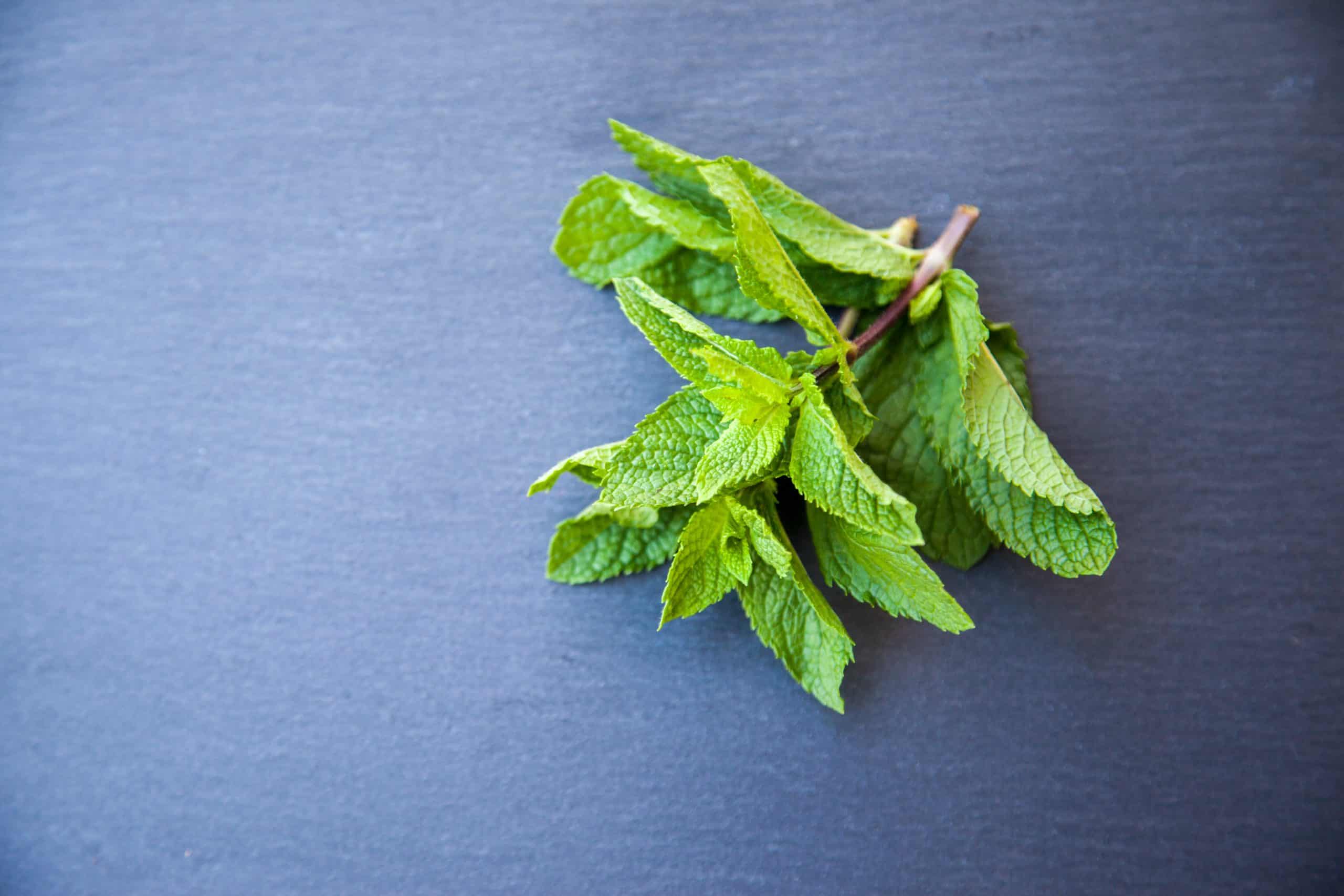
Growing mint at home
Mint is VERY versatile. Because if you are not careful mint will take over your entire yard or garden. Mint can also be grown inside on your windowsill.
Lesson learned, I will be moving my elevated bed of mint into a container to “contain” it. By planting in a container the mint seems to know it’s place and not over grow and take over.
If you do grow mint in your garden plant each mint approximately 2 feet apart. Mint grows up to 1 or 2 feet tall. Mint also requires little care. Mint loves to thrive in cooler, shadier places.
If you are growing several different varieties make sure you mark them. I made the mistake of not marking my mint varieties. The problem I run into now is not knowing what variety is what. I keep smelling the leaves to figure where the garlic mint starts and the chocolate mint begins. What a mess.
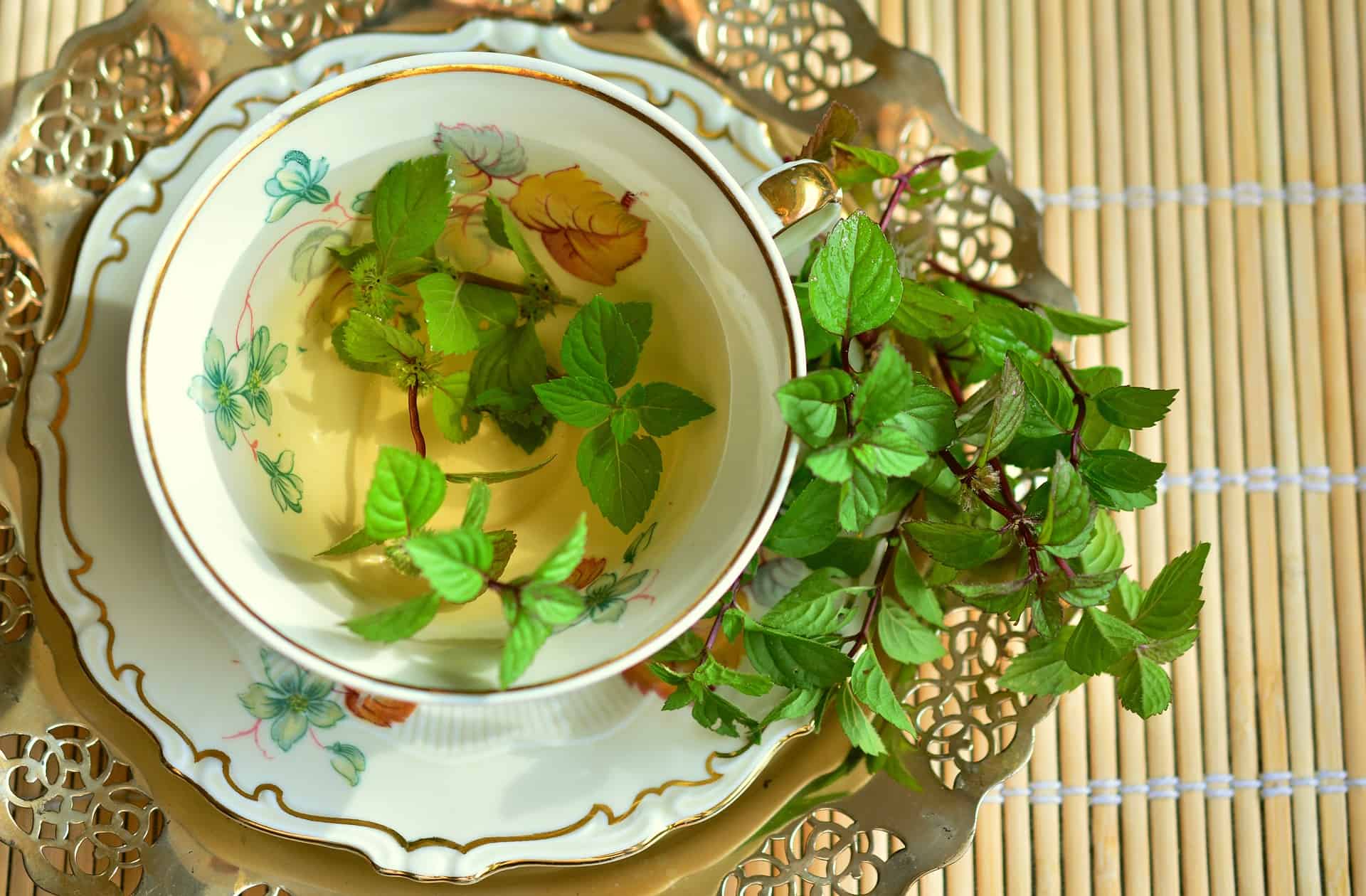
How do you store mint
You can use mint fresh. I recently used it in my 2nd ferment of Kombucha and it was one of my best 2nd ferments to date.
Water your mint the night before you decide to harvest it. Pick in the morning before the dew has evaporated for the best tasting mint.
You can also keep mint alive by placing in jars of water to keep it fresh for a bit of time.
One of the best ways to store mint is by dehydrating it. You can gather your mint and hang it upside down. It’s pretty and refreshing. My kitchen always smells so nice with the mint and herbs hanging around.
The other way is to dehydrate using a dehydrator. I have found drying the stem and leaves whole. Once dry I remove the leaves and place in a glass jar.
You can also use a mortar and pedestal to crunch up the leaves to use for culinary purposes.
You may need to save your mint for a period of time. Gather your mint and place in a wet cloth inside a plastic bag. Take that bag and place it inside your fridge. The mint will last for several weeks like that.
One other fun way to preserve and use mint is by freezing some into ice cubes. Once frozen you can use it in water, lemonade or tea. It’s a genius way to add tea to your beverages and it looks great too.
Mint tea cautions
There are a few restrictions for those who need to avoid mint.s
- People who suffer from GERD – gastroesophageal Reflux Disease
- People who have suffered from gallstones
How to prepare mint tea (tisane)
Recipe One
- 2 cups of filtered water
- 15 fresh mint leaves
- Bring water to a boil
- Add mint leaves
Let steep for 3 minutes
Optional:
- Add Sweetener (remember mint is a sweeter flavor
- Add Ice
- Add Lemon Slices or Juice
ENJOY
Recipe Two
Peppermint and Ginger Tea
Ingredients:
- 2 cups water
- 1 handful of fresh mint leaves
- 1 2-inch piece of ginger
- 4 lemon slices
- 1 cinnamon sticks
- Sweetener if desired
Instructions:
- Fill a large pot with water and add in the ginger and 3 lemon slices. The other lemon slices will be for garnish. Bring the water to a rapid boil and turn the heat down to medium. Add in the peppermint leaves and allow the tea to simmer for 8 to 10 minutes.
- Add the sweetener to the hot water if desired.
- Remove the leaves and ginger pieces using a fine mesh strainer. Garnish with a slice of lemon, cinnamon stick, and a mint sprig.

Conclusion
The benefits of mint tea are some of the most beneficial herbs that you can grow and maintain in your own yard or patio. When you harvest it from your own yard you will know exactly how it has been grown and treated. Brew it fresh or dehydrated it’s a win/win. Mint can get away from you and take over a garden or yard. Make sure to control your mint and don’t allow it to control you. Know exactly how much you want and where you want it to grow. Mint is a versatile herb that will continue to be beneficial for years to come.

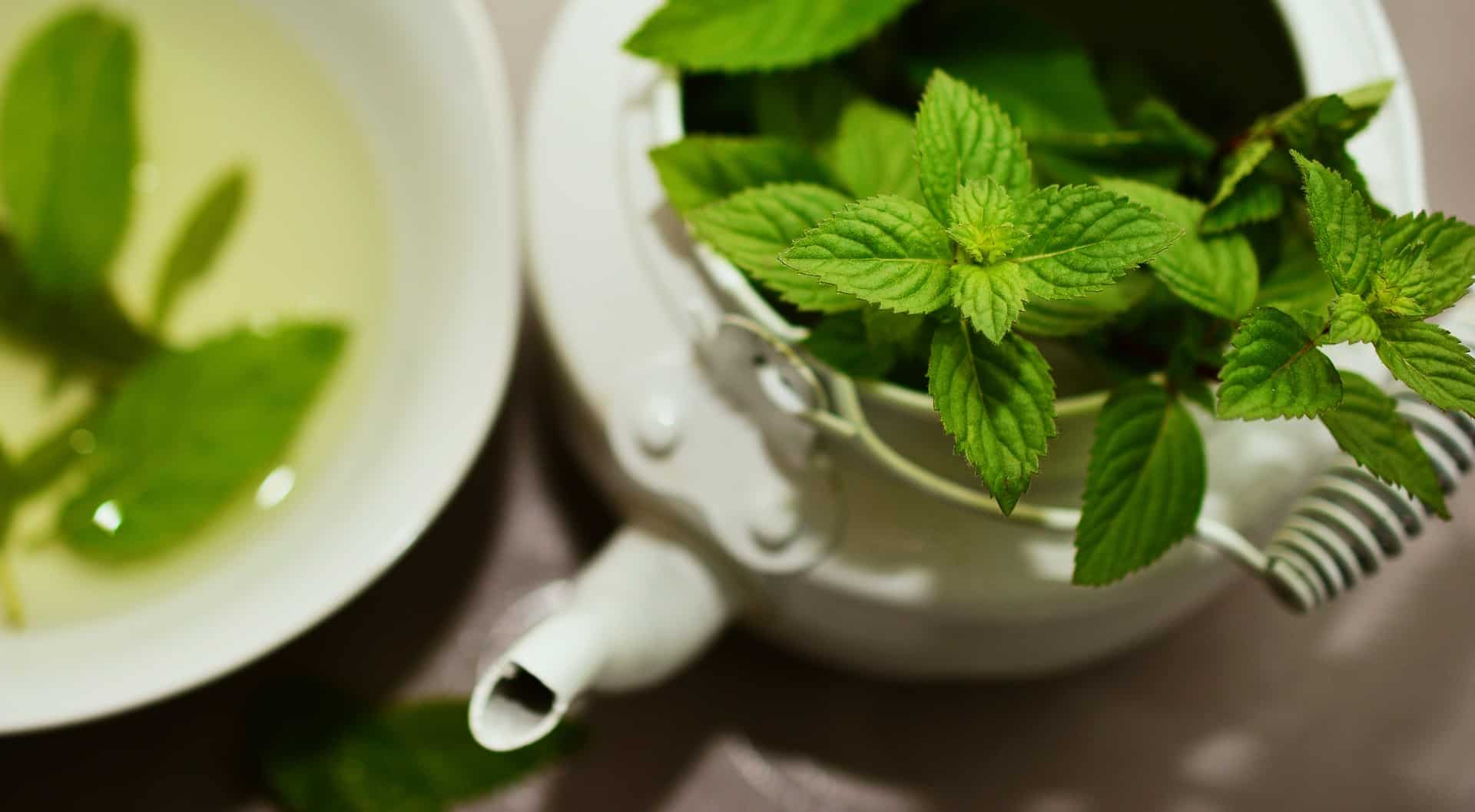

2 thoughts on “How To Know If Mint Tea Is Beneficial To Your Health”
Pingback: Loving New Drink Ty-Ku With Mint Leaves From Garden |
Pingback: Mint tea latte recipe: a creamy cool refreshing iced drink